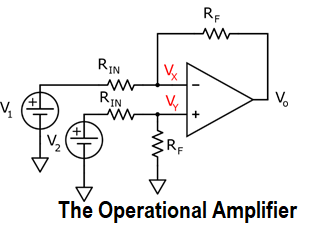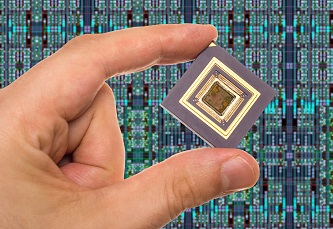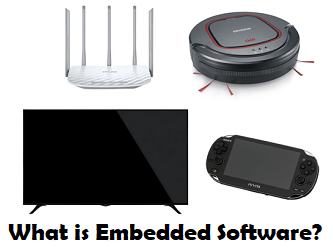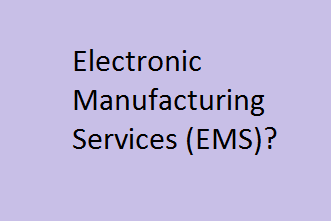This website uses cookies so that we can provide you with the best user experience possible. Cookie information is stored in your browser and performs functions such as recognising you when you return to our website and helping our team to understand which sections of the website you find most interesting and useful.
Debugging Embedded Systems
Debugging Embedded Systems: A Comprehensive Guide
Debugging embedded systems can be a challenging yet rewarding task for engineers and developers. As technology continues to evolve, the complexity of embedded systems increases, making effective debugging techniques essential for successful product development. In this article, we will explore various aspects of debugging embedded systems, including common challenges, tools, techniques, and best practices.
Understanding Embedded Systems
Before diving into debugging, it’s crucial to understand what embedded systems are. An embedded system is a computer designed to perform dedicated functions within a larger system. These systems are typically integrated into hardware and are characterized by their specific functionality, real-time performance, and resource constraints.
Key Components of Embedded Systems
- Microcontroller/Microprocessor: The brain of the embedded system, responsible for executing instructions.
- Memory: Used for storing data and program code, including RAM, ROM, and Flash memory.
- Input/Output Interfaces: Allow the system to interact with the external environment, including sensors and actuators.
- Power Supply: Provides the necessary power for the system to operate.
Common Challenges in Debugging Embedded Systems
Debugging embedded systems presents unique challenges compared to traditional software debugging. Here are some common issues developers face:
1. Limited Resources
Embedded systems often operate with limited memory and processing power, making it difficult to implement extensive debugging features.
2. Real-Time Constraints
Many embedded systems are real-time systems, meaning they must respond to inputs within a specific time frame. This constraint can complicate debugging efforts.
3. Hardware-Software Interaction
Debugging often requires a deep understanding of both hardware and software, as issues may arise from the interaction between the two.
4. Lack of User Interface
Embedded systems may not have a user interface, making it challenging to gather feedback or display error messages.
Debugging Techniques for Embedded Systems
To effectively debug embedded systems, developers can employ various techniques. Here are some of the most common methods:
1. Code Review
Conducting thorough code reviews can help identify potential issues before they become problematic. Peer reviews can provide fresh perspectives and catch errors that the original developer may have overlooked.
2. Simulation and Emulation
Using simulation tools allows developers to test their code in a controlled environment before deploying it to the actual hardware. Emulators can mimic the behavior of the hardware, enabling developers to debug software without needing the physical device.
3. In-Circuit Debugging
In-circuit debugging involves using specialized tools to interact with the hardware directly. This technique allows developers to set breakpoints, inspect memory, and control execution flow in real-time.
4. Logging and Tracing
Implementing logging mechanisms in the code can help track the system's behavior during execution. By logging critical events and errors, developers can gain insights into the system's performance and identify issues more easily.
5. Unit Testing
Unit testing involves testing individual components of the system in isolation. This technique helps ensure that each part of the system functions correctly before integrating it with other components.
6. Hardware Debugging Tools
Utilizing hardware debugging tools, such as oscilloscopes and logic analyzers, can help diagnose issues related to signal integrity, timing, and communication between components.
Popular Debugging Tools for Embedded Systems
There are numerous tools available for debugging embedded systems. Here are some popular options:
1. GDB (GNU Debugger)
GDB is a powerful debugging tool for C and C++ programs. It allows developers to inspect the state of a program, set breakpoints, and step through code execution.
2. JTAG Debuggers
Joint Test Action Group (JTAG) debuggers provide a standardized interface for debugging embedded systems. They allow developers to access the microcontroller's internals and perform in-circuit debugging.
3. Integrated Development Environments (IDEs)
Many IDEs, such as Eclipse and Keil, come with built-in debugging features that simplify the debugging process. These tools often include graphical interfaces for setting breakpoints and inspecting variables.
4. Logic Analyzers
Logic analyzers are essential for debugging digital signals in embedded systems. They capture and analyze digital signals, helping developers identify timing issues and communication errors.
5. Oscilloscopes
Oscilloscopes are used to visualize analog signals and can help diagnose issues related to signal integrity and noise in embedded systems.
Best Practices for Debugging Embedded Systems
To enhance the debugging process, developers should follow these best practices:
1. Start with a Clear Understanding of Requirements
Before beginning the debugging process, ensure that you have a clear understanding of the system requirements and specifications. This knowledge will guide your debugging efforts and help you identify the root cause of issues more effectively.
2. Isolate the Problem
When encountering an issue, try to isolate the problem by testing individual components or subsystems. This approach can help narrow down the source of the problem and make it easier to address.
3. Use Version Control
Implementing version control systems, such as Git, can help track changes in the codebase and facilitate collaboration among team members. This practice allows developers to revert to previous versions if a new change introduces a bug.
4. Document Everything
Maintain thorough documentation of the debugging process, including the steps taken, observations made, and solutions implemented. This documentation can serve as a valuable reference for future debugging efforts.
5. Collaborate with Team Members
Don’t hesitate to seek help from colleagues or team members. Collaborating with others can provide new insights and perspectives that may lead to a quicker resolution of the issue.
Case Studies in Debugging Embedded Systems
To illustrate the debugging process, let’s explore a couple of case studies that highlight common issues and their resolutions.
Case Study 1: Communication Failure in a Sensor System
A team was developing an embedded system for a weather station that relied on multiple sensors to collect data. During testing, they discovered that the system was not receiving data from one of the sensors.
After isolating the problem, the team used a logic analyzer to monitor the communication lines between the microcontroller and the sensor. They found that the signal levels were not within the expected range, indicating a potential hardware issue.
Upon further investigation, they discovered a faulty connection on the PCB. After repairing the connection, the system successfully received data from the sensor, demonstrating the importance of hardware debugging tools.
Case Study 2: Timing Issues in a Real-Time System
In another scenario, a team was developing a real-time control system for a robotic arm. They noticed that the arm was not responding to commands as expected, leading to erratic movements.
The team implemented logging in the control software to track the timing of command execution. They discovered that the system was missing deadlines due to high CPU usage from other tasks.
To resolve the issue, they optimized the code to reduce CPU load and implemented a priority-based scheduling algorithm. This change improved the system's responsiveness and ensured that the robotic arm operated smoothly.
Conclusion
Debugging embedded systems is a complex but essential part of the development process. By understanding the unique challenges associated with embedded systems and employing effective debugging techniques, developers can identify and resolve issues more efficiently. Utilizing the right tools and following best practices will not only enhance the debugging process but also contribute to the overall success of embedded system projects.
As technology continues to advance, staying updated on the latest debugging techniques and tools will be crucial for engineers and developers working in the embedded systems domain. By embracing a systematic approach to debugging, teams can ensure the reliability and performance of their embedded systems, ultimately leading to successful product launches and satisfied customers.
















